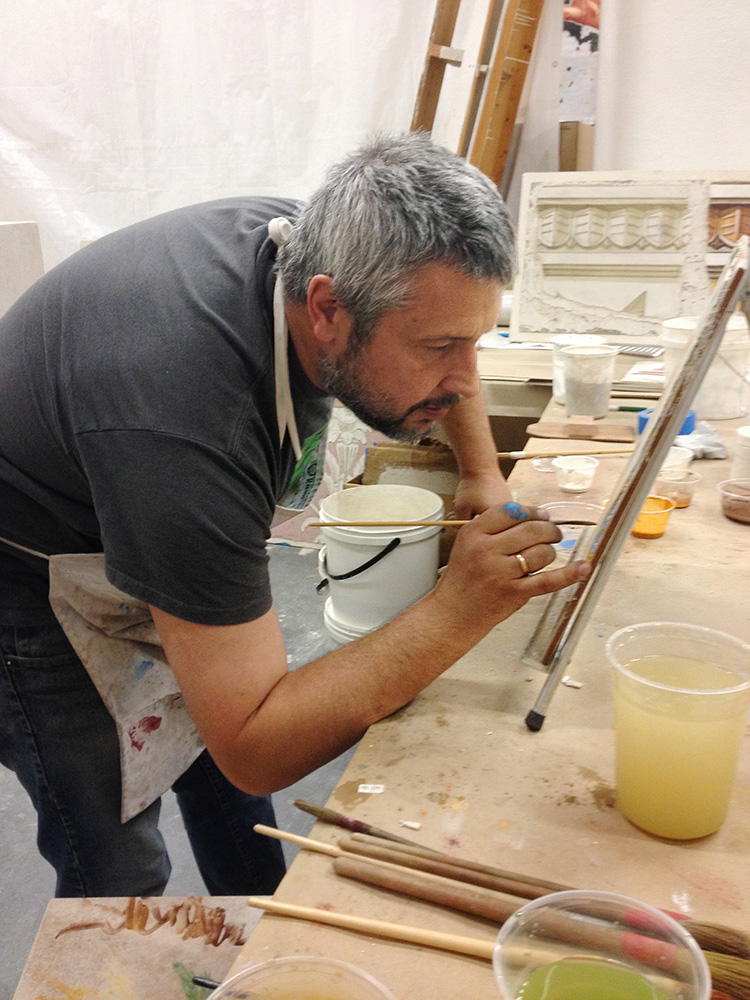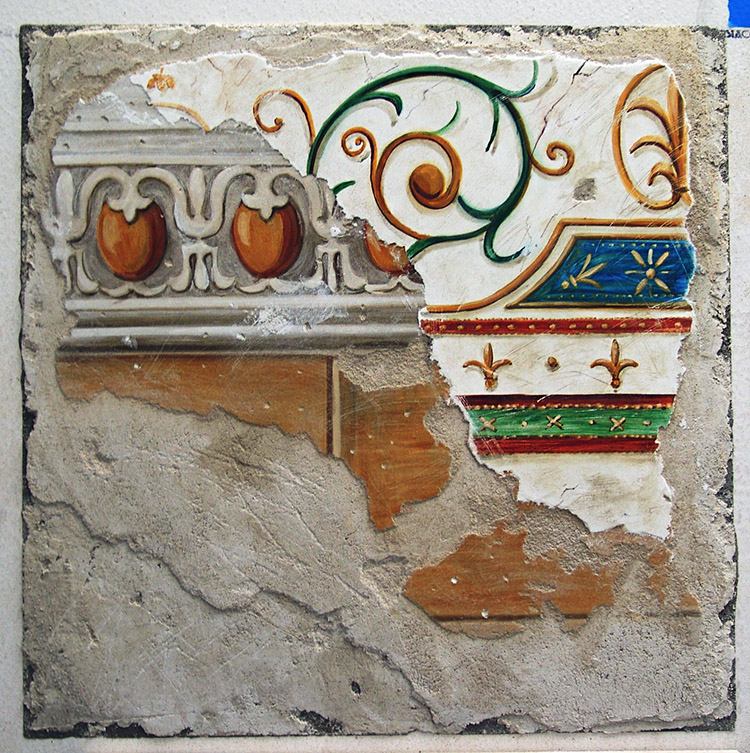
iLia Anossov at work making a fresco. Photo: courtesy of and © Juri Koll
iLia Anossov has been mesmerized with art ever since he was a young child. To iLia, pursuing a career in art was the only thing that made sense. Looking for something everlasting, iLia focused on becoming a fresco master, because, as he told me, “What could be more eternal than fresco?”
He started the Fresco School in Los Angeles, and later was invited to teach fresco workshops at the Getty. Three years later, these workshops are still going strong and iLia continues to be #GettyInspired.
Allison Ramirez: How did you get involved with the Getty?
iLia Anossov: I arrived from Russia for a one-man exhibition at the Springfield Museum of Art in 1992. I was amazed by the fact that fresco was considered a lost art and had not been represented in the contemporary art world since Diego Rivera. There was no school, not even a source of consistent information to guide artists in their exploration of the medium.
Ever since then, my dream has been to see fresco being painted in every town—a dream that’s consumed everything I could think of. In 1996, I started the Fresco School in Los Angeles and some years later, the Getty decided to offer workshops in fresco painting as part of their studio course program. The rest is history.
Tell us about your fresco workshops at the Villa.
I’ve been teaching fresco workshops at the Getty Villa since 2013. A year earlier, educator Audrey Chan contacted me about the possibility of developing an introductory workshop for the Getty. Following our initial meeting, we created didactic panels for the class and developed a fresco program. Since then I have been teaching hands-on workshops twice per year, with an occasional lecture/demo presentation. I’m excited about how many people are responding to fresco.
Give us a quick fresco tutorial.
The Italian word for the medium, affresco, is known as “fresco” in English. It’s painting done on freshly laid wet plaster with pigments dissolved in lime water. As both dry, they become completely integrated. In true fresco, the artist must start applying his colors on the wet (or fresco) layer of plaster (known as the intonaco) as soon as it has been prepared and laid on the wall. The colors can thus be absorbed by the wet plaster. When it dries and hardens, the colors become one with plaster. Technically speaking the plaster doesn’t “dry.” Instead, a chemical reaction occurs: calcium carbonate forms when carbon dioxide in the air combines with calcium hydroxide in the wet plaster.
In its essence, fresco painting is an application of natural mineral pigments to a surface on which a chemical reaction takes place. It’s like painting with molten marble.

A fresco sample showing the stages of creation, from left to right. Artwork © iLia Anossov. Photo courtesy of and © Juri Koll
What particularly appeals to you about this process?
Fresco is said to be the most organic or green method of painting—no solvents, glues, or manmade materials are used. It’s also the most permanent method of painting, which will not fade or flake off. The aged crumbling look of old frescoes is a result of the damage to the wall surface, not the painting.
Frescoes of Pompeii survived volcano eruption and centuries under the ashes! Recently cleaned frescoes by Michelangelo in the Sistine Chapel are a great example of the permanence of the medium.
Text of this post © J. Paul Getty Trust. All rights reserved.
_______
iLia’s next two-part class takes place at the Getty Villa on June 5 and June 12. Day 1 covers fresco history through the ages and includes a visit to the Museum galleries. iLia and students will then prepare plaster for the next class, which will consist of the final application of plaster and fresco painting.

See all posts in this series »




I conducted a fresco workshop at the Getty Museum in 1983. I presented a hands-on demonstration of the process and conservator Andrea Rothe demonstrated the strappo method of removing a fresco from the wall.
Since 1949 The Skowhegan School of Painting in Maine has conducted fresco painting each summer as part of the residency program.